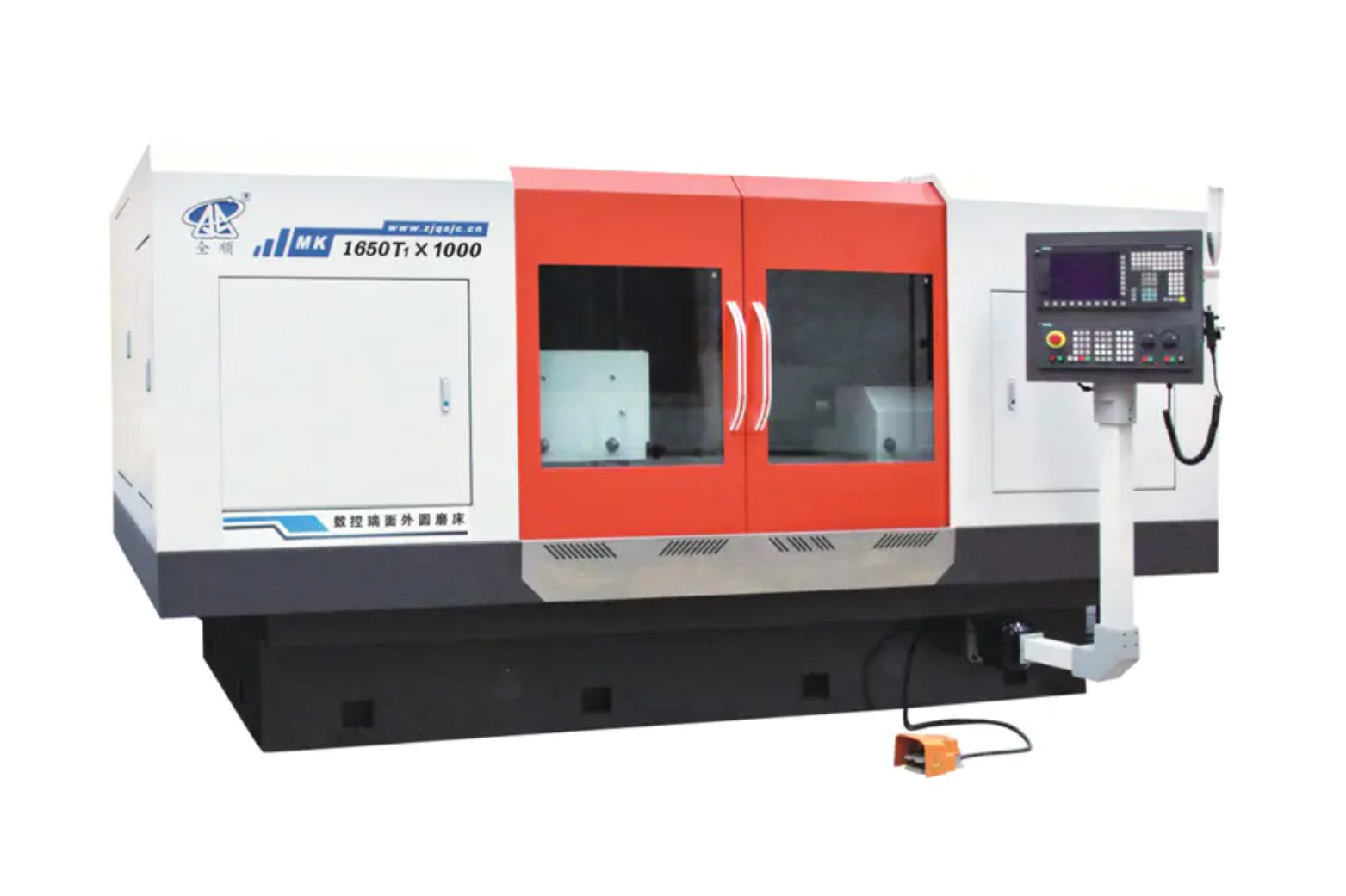In the field of precision manufacturing, CNC grinding machines play a crucial role. They utilize high-speed rotating grinding wheels to perform fine grinding on the surface of workpieces, achieving extremely high dimensional accuracy and surface finish. With the continuous increase in industrial demands for high-precision and high-efficiency machining, the types of CNC grinding machines have become increasingly diverse and specialized.
Content
Classification by Machining Object and Function: Mainstream CNC Grinding Machine Classifications
CNC grinding machines are mainly classified according to the shape of the workpieces they process and their specific functions, forming several main types:
1. CNC Cylindrical Grinding Machine
Features: Specifically used for grinding the outer cylindrical surfaces, conical surfaces, and certain shoulder end faces of workpieces. It is the core equipment for precision machining of shaft parts. Modern CNC cylindrical grinding machines typically have multi-axis control, enabling composite grinding, such as completing the precision machining of outer diameters and end faces in a single setup.
2. CNC Internal Grinding Machine
Features: Used for grinding the internal cylindrical or conical surfaces of workpieces. Due to space constraints in internal grinding, these machines typically employ high-speed electric spindles. They are widely used in industries such as automotive parts (e.g., bearing housings), hydraulic components, and molds.
3. CNC Surface Grinding Machine
Features: Used for grinding the flat or shaped surfaces of workpieces. Based on the relationship between the grinding wheel axis and the table's movement direction, they can be further divided into horizontal-spindle rectangular tables, vertical-spindle rotary tables, etc. Their core advantage lies in providing extremely high flatness and surface roughness.
4. CNC Tool Grinding Machine
Features: Specifically designed for grinding and manufacturing various cutting tools (e.g., drills, milling cutters, gear cutters, etc.). These CNC grinding machines typically have five or more axes of simultaneous control to handle complex tool geometries and high precision requirements.
5. CNC Centerless Grinding Machine
Features: Grinding does not require a center hole for positioning; instead, guide wheels and a support plate support the workpiece. This method is ideal for high-volume, continuous grinding of the outer diameter of slender rod-shaped parts, offering extremely high production efficiency.
6. CNC Jig Grinding Machine
Features: Equipped with a high-precision coordinate measurement and positioning system, primarily used for grinding holes in molds or precision parts with extremely high precision and surface finish.
Classification by Automation and Structural Characteristics: Auxiliary Types for Enhancing Efficiency
In addition to the mainstream types classified by function mentioned above, CNC grinding machines can also be subdivided based on their structure and degree of automation:
Compound Grinding Machines
Combining multiple grinding functions, such as grinding outer diameters, inner holes, and end faces, enabling multiple processes to be completed in a single setup, greatly improving machining accuracy and efficiency.
High-speed/Ultra-high-speed grinding machines
Employ CBN (cubic boron nitride) or diamond grinding wheels and perform grinding at extremely high linear speeds, significantly improving material removal rate and machining quality.
Gantry-type CNC grinding machines
With strong structural rigidity, suitable for grinding the flat surfaces or guideways of large, heavy workpieces.
CNC Grinding Machine Selection Considerations and Future Trends
Choosing the right CNC grinding machine requires comprehensive consideration of the workpiece's size, shape, precision requirements, batch size, and budget. For example, if machining a large number of slender shafts is required, a CNC centerless grinder is the best choice; if complex mold hole systems are involved, a CNC coordinate grinder must be selected.
The future development trends of CNC grinding machines will focus on the following points:
- Combined and integrated: One machine tool completes more processes, reducing handling and clamping errors.
- Intelligentization: Integrating intelligent monitoring, adaptive control, fault diagnosis, and other technologies to achieve unmanned or minimally staffed production.
- Ultra-precision: Pursuing nanometer-level machining accuracy and surface quality.
CNC grinding machines are indispensable precision equipment in modern industry. Their diverse types can meet various high-precision requirements, from mass production to complex mold processing, and are one of the key technologies driving the upgrading of high-end manufacturing.
 0086-15068518279 (Chinese)/001-5416026691 (English)
0086-15068518279 (Chinese)/001-5416026691 (English) 





 EN
EN
 中文简体
中文简体





















